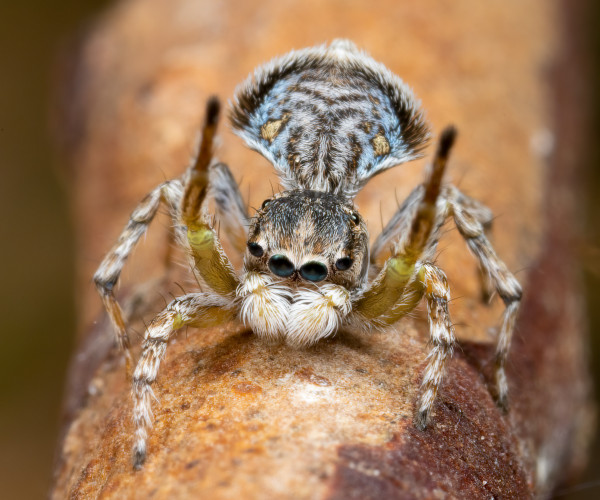A DISTINCTIVE tiny colourful dancing spider, unsighted publicly for over two decades, has been discovered in the Millewa.
Macro photographer Garry Deale located a male specimen of a previously unidentified species of peacock spider near Wargan on November 22 last year.
The live specimen was sent to acarologist and arachnid enthusiast Jürgen Otto, who verified it as a match to an unnamed maratus spider first discovered in the Sturt National Park, near Tibooburra, NSW, in 1997.
Garry’s spidey senses continued to tingle, and on April 8 this year, alongside his son Shannon, collected two more male and three female specimens near Lake Walla Walla.
Mr Otto verified the arachnids and was able to go through the process of giving the species an official name, maratus playa.
“We knew about their existence just from museum specimens, but hadn’t been able to actually photograph and film them and give them names,” Mr Otto said.
“I have made it a principle to describe new species of peacock spiders from living spiders only.
“I wanted to name it eventually, it’s really exciting that that happened.”
The maratus playa has only been documented 12 times, found on eight occasions in far west NSW, and twice in inland Western Australia.
The males of the species have colourful chevron-patterned fan shaped abdomens, which they are able to elevate and extend laterally.
They also have somewhat green undersides on their legs, four of which they wave from side to side in an elaborate courtship display to attract a mate.
“When they dance they put these huge displays up that look really complex when they’re moving,” Shannon said.
“To collect one that has this complex dance was very exciting.”
There are 97 identified species of peacock spider in Australia, and more than two dozen yet to be named.
The maratus playa, given its name this month, is a distinct member of the group due to its subdued pastel colouration.
“The species is not very brightly coloured, but that seems typical of species of this group that live in the arid parts of the country,” Mr Otto said.
“I suspect it has something to do with camouflage.”
The males are only 3.3-3.8mm in length, while the females are slightly larger, ranging from 4.2-4.8mm, with patterns consisting of largely white, or light brown, hair follicles.
Shannon said finding this new species wasn’t easy, and it involved a lot of unsuccessful field trips.
“There’s a lot of going out into the wild and you spend all day looking for it and you don’t find it,” he said
“Macro photography allows people to see these creatures that they normally wouldn’t look for.
“To see that we found the right one and all that hard work paid off and (Mr Otto) was able to describe it, you certainly do get a bit of a buzz.
“All those days of lying in the dirt weren’t for nothing.”
He described the maratus playa as an endearing and cute arachnid which people should be excited to have in their backyard.
“When you think spider, you tend to think redback or a tarantula – big, scary, hairy, possibly might bite me. With a maratus playa the first thing you think of is it dances and it’s very colourful,” Shannon said.
“They’re not all that hairy, ominous huntsman that walks across your wall that scares you. Some of them are cute little spiders that just want to dance and find a mate.”
Mr Otto said the addition of the maratus playa to the known species list is particularly exciting, given its observed distribution is atypical.
“We know very little actually about the atypical spiders that live in the interior,” Mr Otto said.
“The fact that this one lives there and has a wide distribution, we think that there could be a lot more things to be found.”








